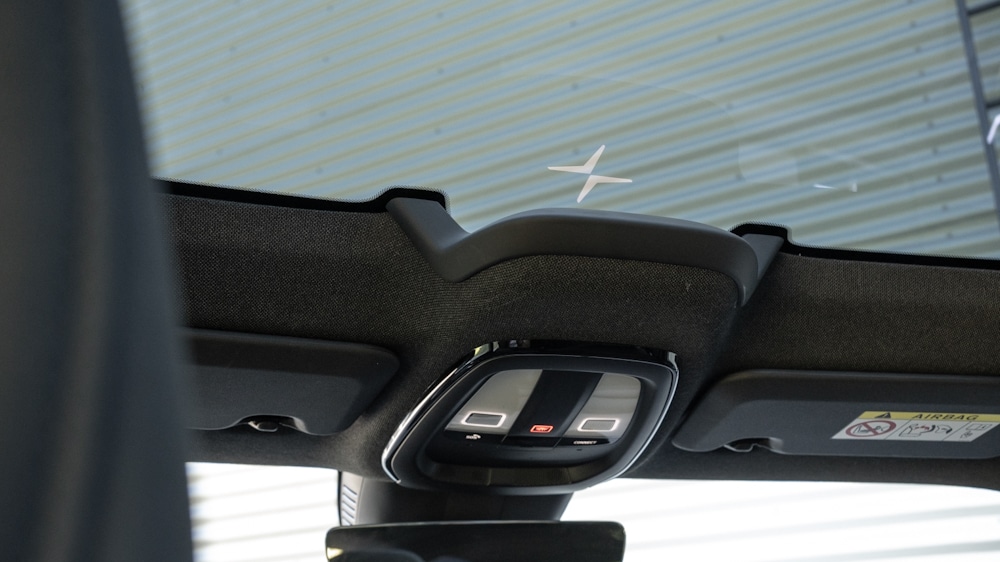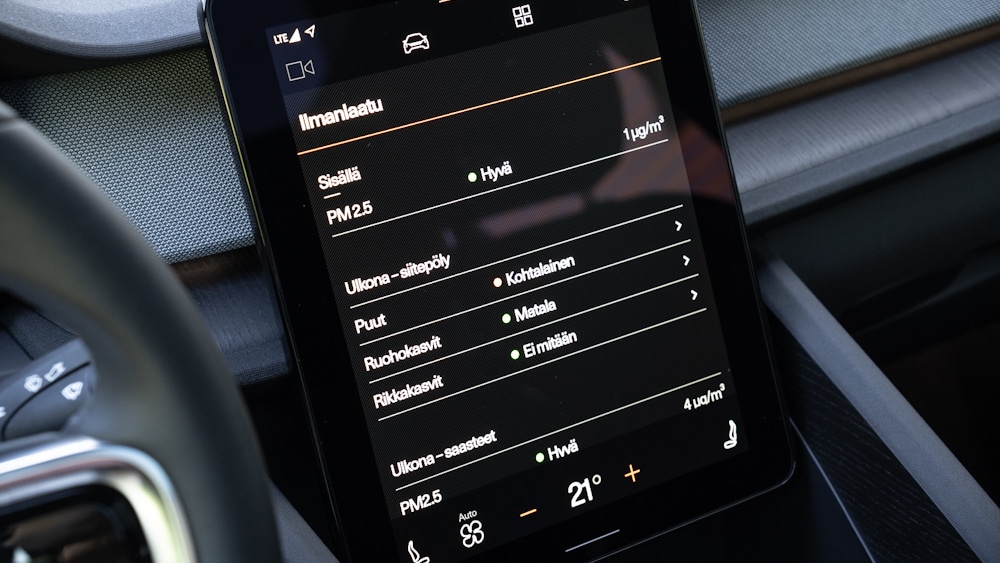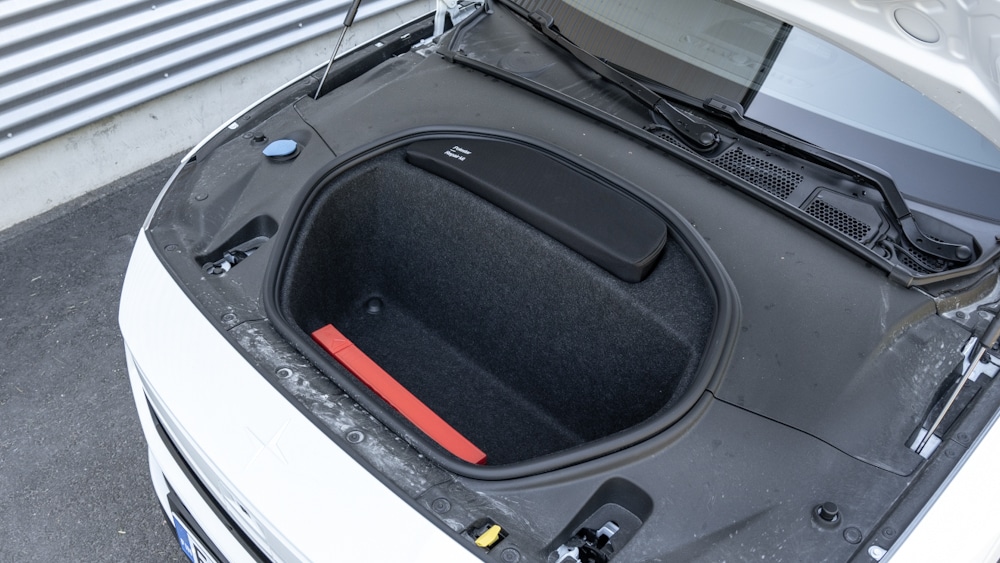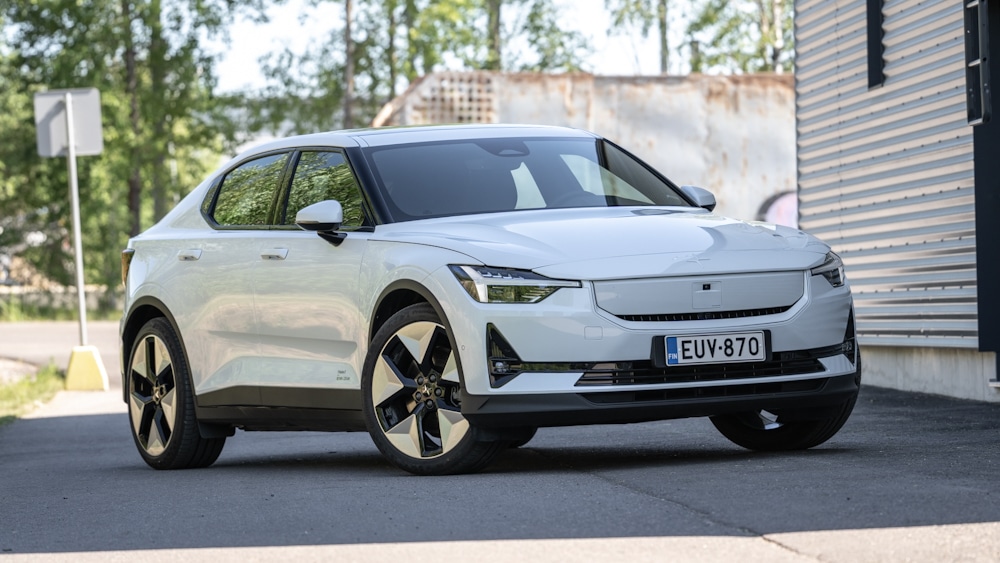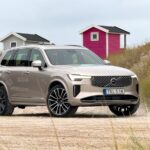Polestar is still a new and unfamiliar car brand to some, while many associate Polestars with sleek Scandinavian design, flashy advertising and eco-friendly all-electric cars. No matter how familiar you may be with Polestar, the brand is already a pleasant introduction through the manufacturer’s website.
Simplicity, visual elegance and climate transparency are the first things that catch the eye on Polestar’s website. The simplistic presentation of things to the consumer seems to be the hot potato at the moment, with some succeeding well in simplifying marketing and others losing the plot after just a few minutes of web surfing.
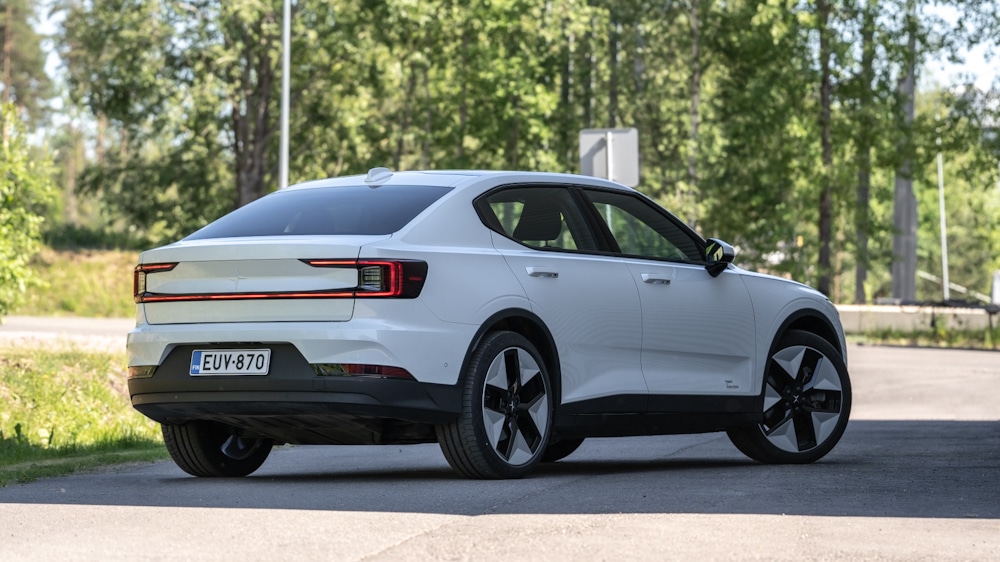
Polestar has always managed to present things in its own simple and clear style. There are plenty of facts embedded in the website, but it is also easy to find the information that interests you or even book a test drive.
Polestar’s sustainability and public sharing of information on the website clearly play a major role. There is very detailed information on emissions from manufacturing processes, controls and certifications, as well as on the future objectives of the brand. More on green issues later.
Car as a brand or brand as a car
The Polestar 2 looks like a larger car than its size in person. The overall length of the car is just 4.6 metres, compared to a Tesla Model 3, for example, which is a good 10 centimetres longer.
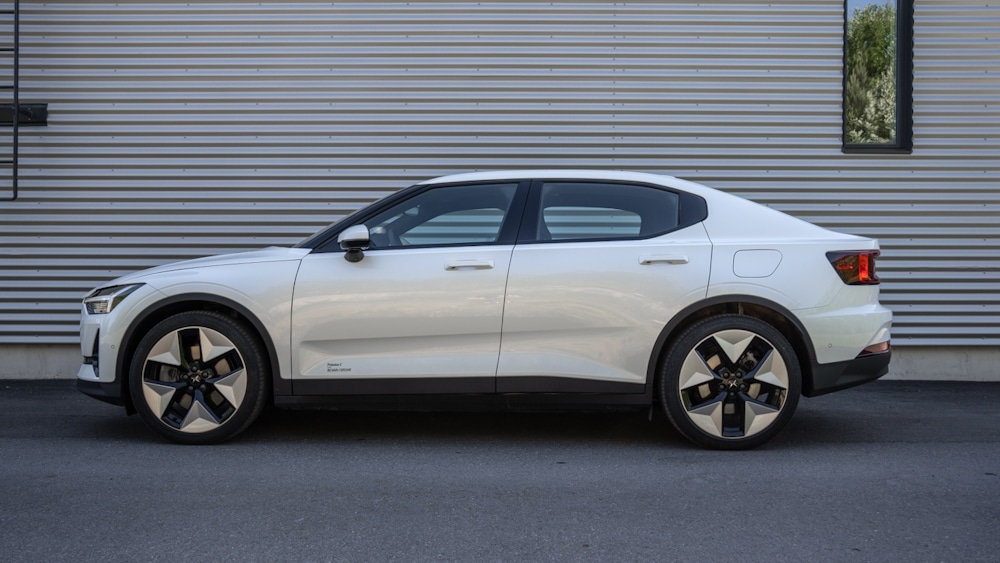
Low windows, a high sidewall and large rims make the two-seater a sturdy-looking car. The exterior of the car is sprinkled with a few bits of information, in typical brand fashion. The battery capacity and engine power can be found on the front door. At the front, the front grille has been replaced by a SmartZone with a camera and the words ‘Mid-range radar’, referring to the radar that monitors hazards and other road users.
The dark soft interior of the test car is upholstered in vegan PVC-based Weave-Tech fabric. Polestar says the upholstery production process reduces the amount of chemical softeners to a fraction of the usual amount.
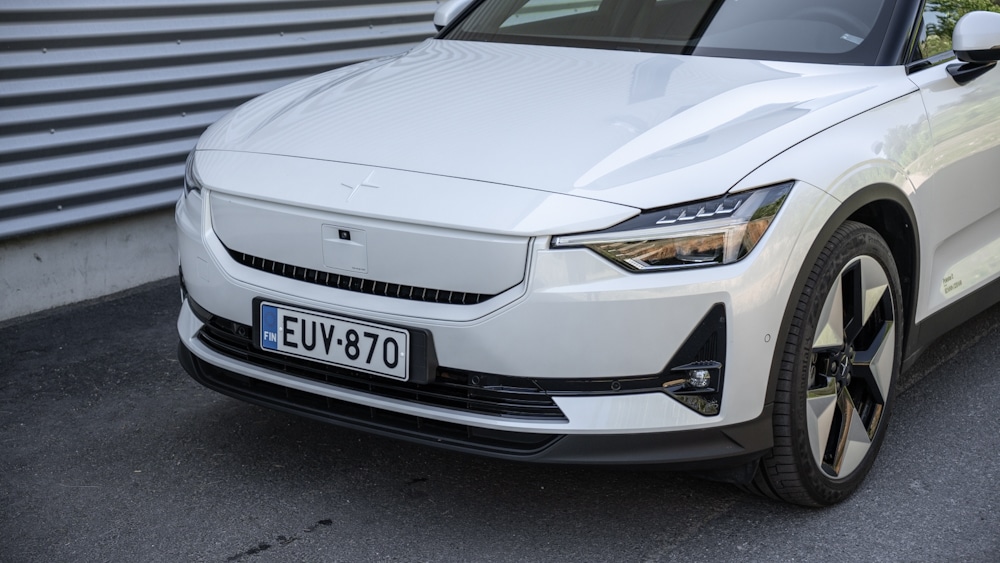
For those who want more luxury in their car, the upholstery material of choice is genuine leather. The Polestar 2’s leather upholstery comes from the automotive specialist Bridge of Weir in Scotland, whose ‘zero waste, zero carbon’ target will be achieved as early as next year. In addition to the company’s emissions, the origin of the leather and the monitoring of the Animal Protection Index, which is said to be at a high level, will also play a major role.
In terms of interior space, the car is not at the top end of the range for front-seat passengers. In the front, the driving position is quite good, but the high and flared centre console makes legroom a little cramped sideways.
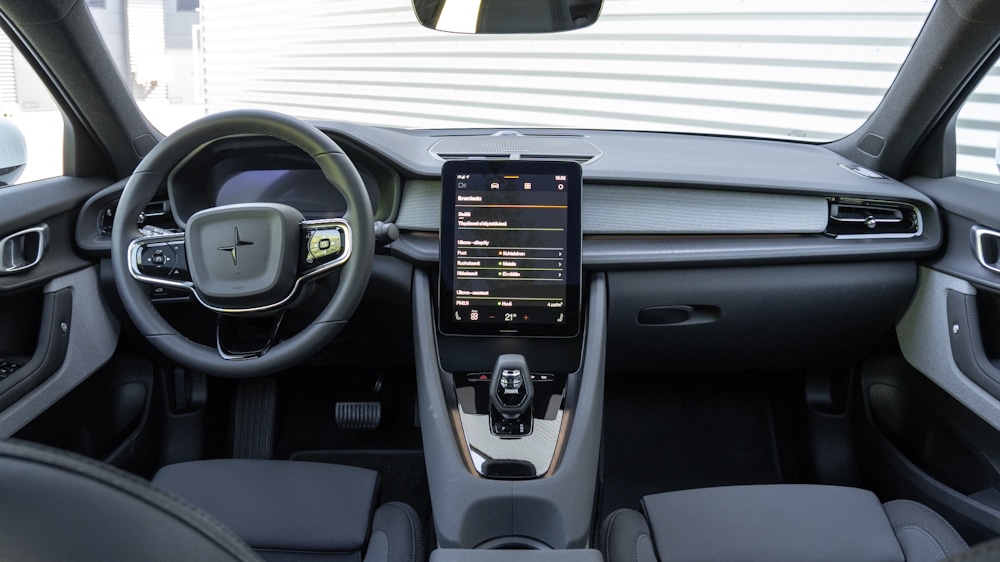
There’s not much storage space up front either. The centre console can easily accommodate just one bottle, the second bottle has to be placed under the elbow. A mobile phone charging cradle can be found under the central switch, which is well out of sight for safety reasons but feels challenging to use, at least initially.
The rear seats comfortably accommodate a couple of adults, and space is increased by a panoramic glass roof window (included in the Plus equipment package). The boot is only 407 litres and that’s already taking into account the deeper trough under the boot floor.
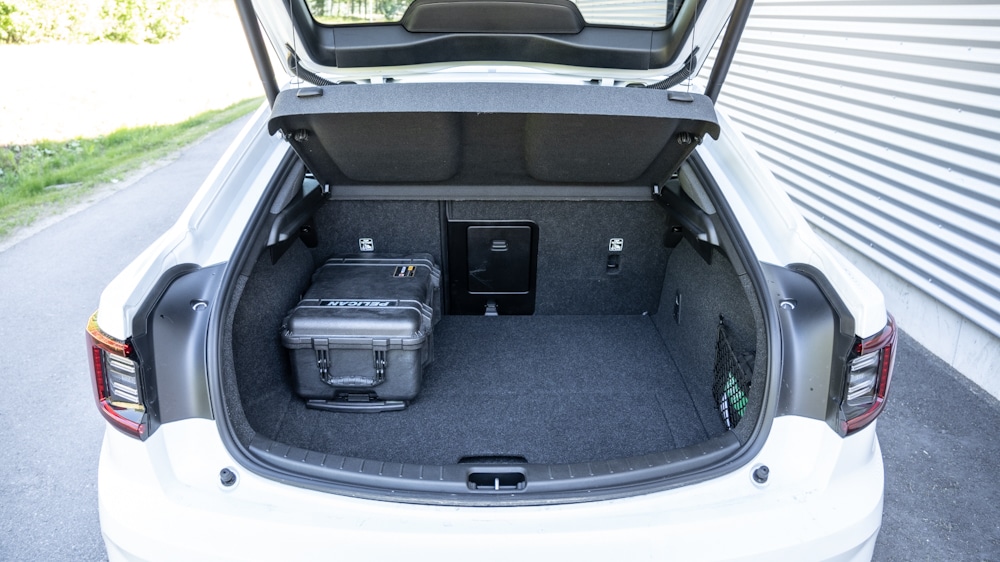
The boot feels considerably larger than its litres, thanks to the good design and the large boot hatch that opens up high. In addition, a handy luggage compartment divider rises from the floor to hold up, for example, shopping bags. At the front, under the bonnet, you’ll find a 41-litre storage compartment for more than just the car’s charging cables.
The Plus equipment package also comes with an air quality system that monitors and cleans indoor air for pollutants, as well as providing information on outdoor pollen levels and pollution.
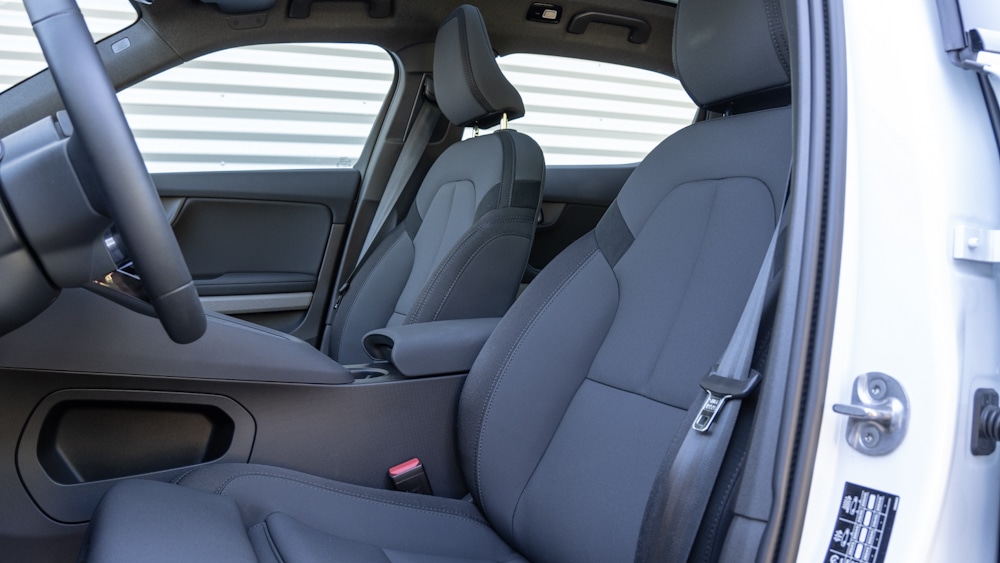
In addition to the exterior and interior design, the simplicity of the website is particularly evident on the screens. The 11.2-inch monochrome screen is reminiscent of the ease of use of the website, with all texts and controls in large font and large icons.
The infotainment system has Android Automotive built-in, which allows a wide range of applications, automatic updates and Google built-in.
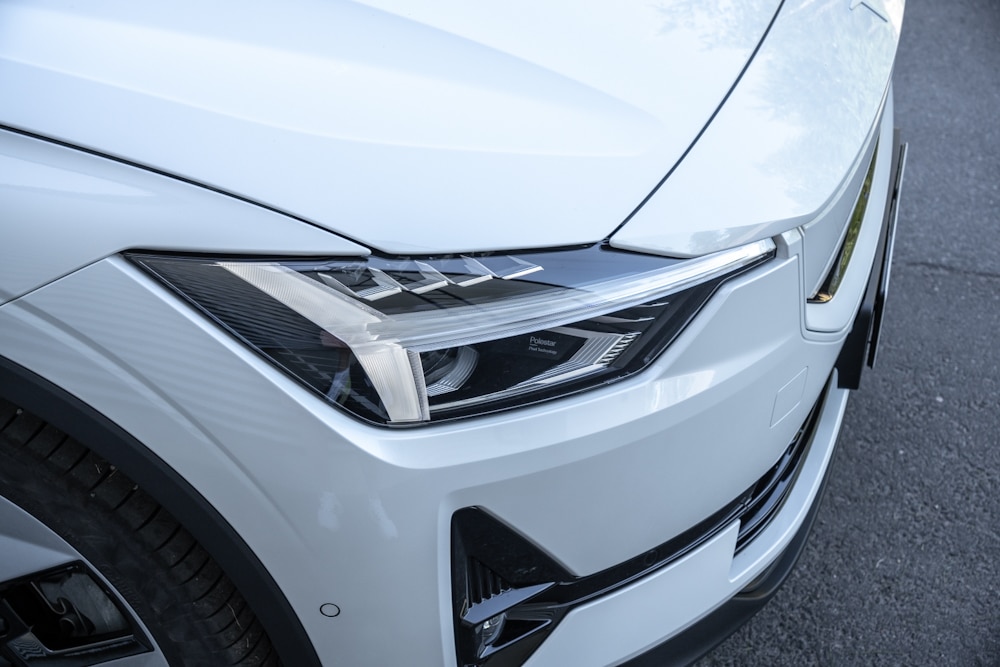
Navigation is smooth with Google Maps and, for example, charging stations can be easily selected directly from the screen. Auto gives an estimate of the current battery charge when navigating via Google. This proved to be conservative on longer journeys, as after a few hundred kilometres you could have up to 5% more power than the original estimate. For competitors, the opposite seems to be often the case.
All car updates come wirelessly over the internet as over-the-air updates, whether they are related to the infotainment system, apps or car systems.
Solid platform and fast downloading
The test-driven Long range Single motor model is equipped with the larger of the two battery packs (82 kWh) and a rear motor only. With this combination, the manufacturer claims the longest operating range for the Polestar 2. The WLTP range is 659 km. The Standard range with the smaller battery has a WLTP reading of 554 kilometres and the maximum engine power is 20 kW less.
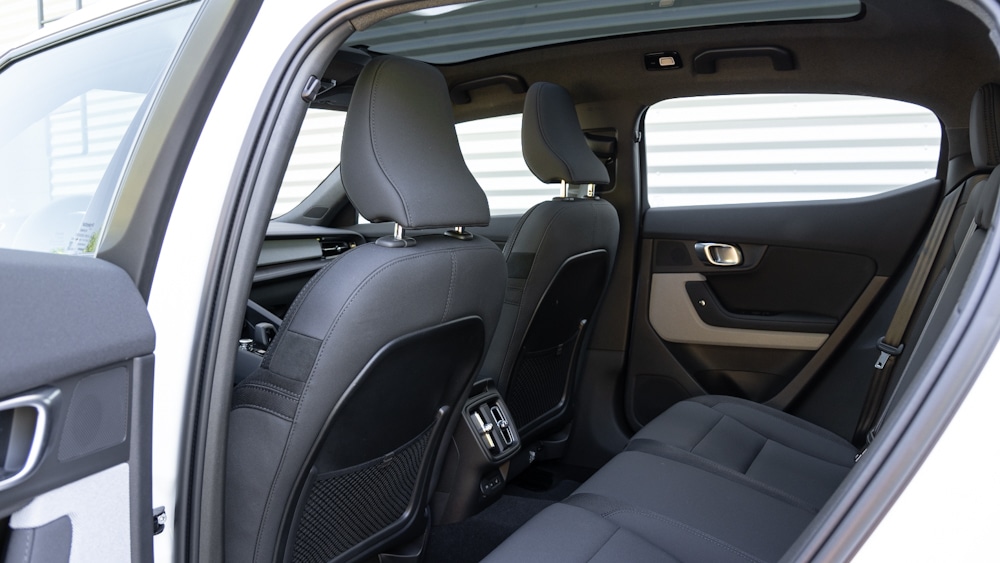
The test week coincided with early summer temperatures of 20-25 degrees Celsius. On the road, despite the car’s 20-inch tyres, the consumption reached a relatively moderate 15.5-16.5 kWh/100km at highway speeds, and on the motorway it reached around 19 kWh/100km. Tyre noise started to be affected by the tyres, especially at higher motorway speeds, and once again the rough Finnish roads did not help.
With 79 kWh of gross capacity available in the drive battery, the cruising range in summer weather on a full battery is 520-400 km, depending on speed.
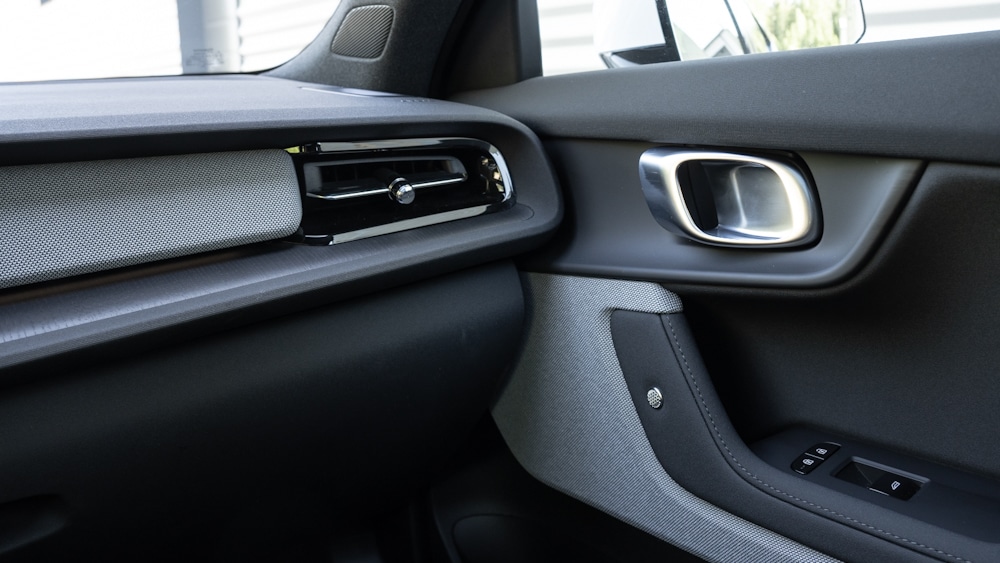
The Polestar 2 on the standard chassis even has a surprisingly snappy feel. Preferences are a matter of taste, and the stiffness of the test drive didn’t bother me, but for some people the ride might feel a bit too harsh at first. Polestar has clearly branded itself as more of a sporty brand than a comfort-oriented one, so the snappiness of the chassis is justified. Öhlins adjustable shock absorbers and Brembo brakes are available on four-wheel-drive Performance models.
Steering feel can be adjusted in three levels. The lightest setting makes the steering feel light and numb, while the middle and especially the stiffest settings give a moderate feel. However, the sharpest precision of the steering feel is lacking.
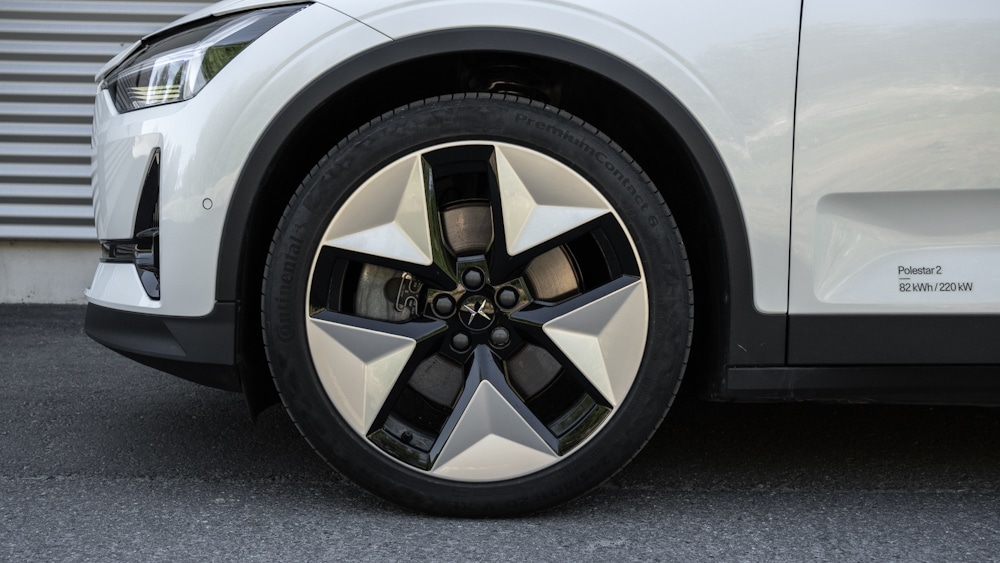
Single-pedal driving can be practised all the way to a standstill, or alternatively, the car can be driven with two-pedal tactics, as one is used to driving an internal combustion engine car.
The test car’s single-engine powertrain produces a comfortable 220 kilowatts of power and acceleration at higher speeds is adequate to say the least. The power is controlled linearly with the accelerator pedal and the maximum torque is 490 Newton metres.
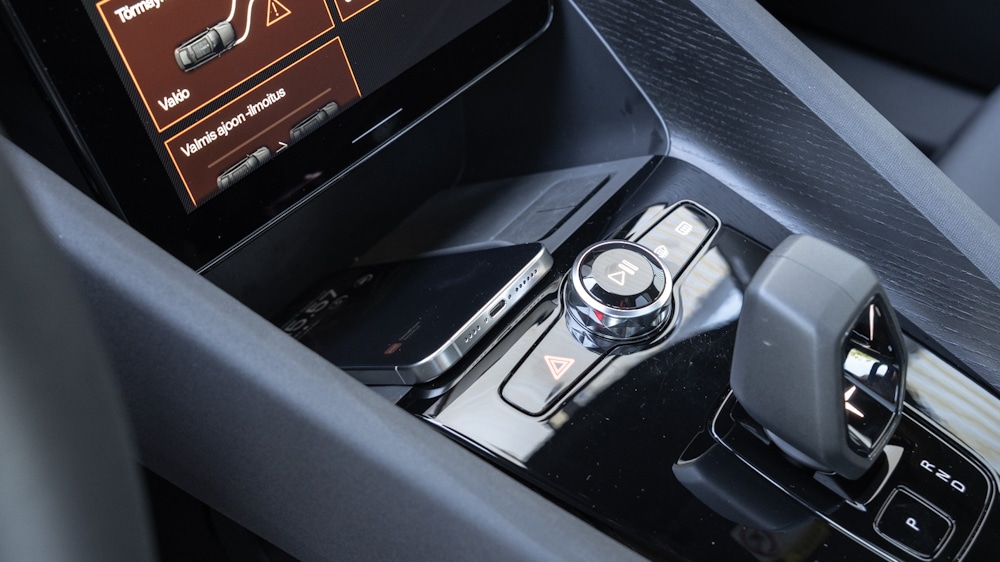
The car’s adaptive cruise control sometimes reacts too strongly to the speed of a car in front or changing lanes, regardless of the set distance. The lane-keep assist system does its job without any problems, at least in good visibility in summer weather.
Visibility out of the cabin is good despite the small windows. In the cabin, it feels as if you are sitting slightly higher than in a normal car, which clearly improves visibility. In addition, the almost frameless mirrors make it easy to keep an eye on the traffic behind you.
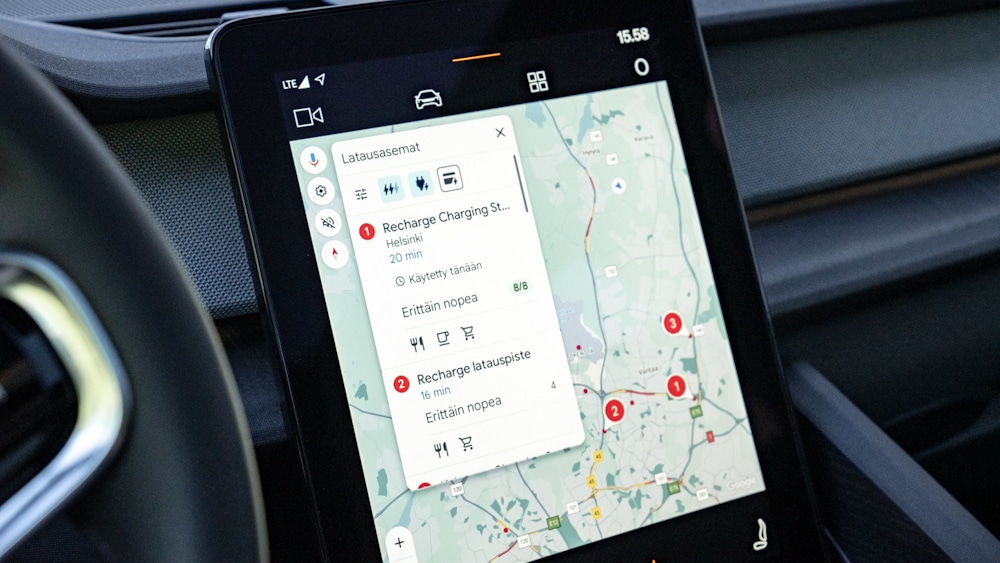
The 10-80% quick charge time for the larger battery size model is claimed by the manufacturer to be 28 minutes. On the road, the 70% charge interval means 300-350 kilometres on summer consumption. The 11-80% charge test was completed in 31 minutes, which can be considered a commendable performance. The outside temperature was 22 degrees Celsius.
The maximum charge power was 185 kW. and the charge power remained at 175 kW. up to 40%. The charging power dropped below 100 kW. only at 70 %, after which the charging power started to drop significantly. Based on the charging test, a charge of less than 15 minutes provides enough electricity for 200 km of motorway driving, starting from a charge level of about 10%.
Expanding production, approaching carbon neutrality
Finally, let’s return to green issues. As noted earlier, Polestar’s communications seem to take a strong stance on current emissions and future targets. Polestar’s carbon neutrality target is 2040.

2040 is not much different from the competition. The majority of car manufacturers are aiming for carbon neutrality between 2040 and 2050, largely driven by the EU’s 2050 deadline.
What Polestar does differently from many manufacturers is its style of presenting climate issues in a consumer-friendly way through facts and figures. On its website, Polestar presents not only the emission figures but also the raw materials used in the batteries and a number of partners involved in sustainability and responsibility.
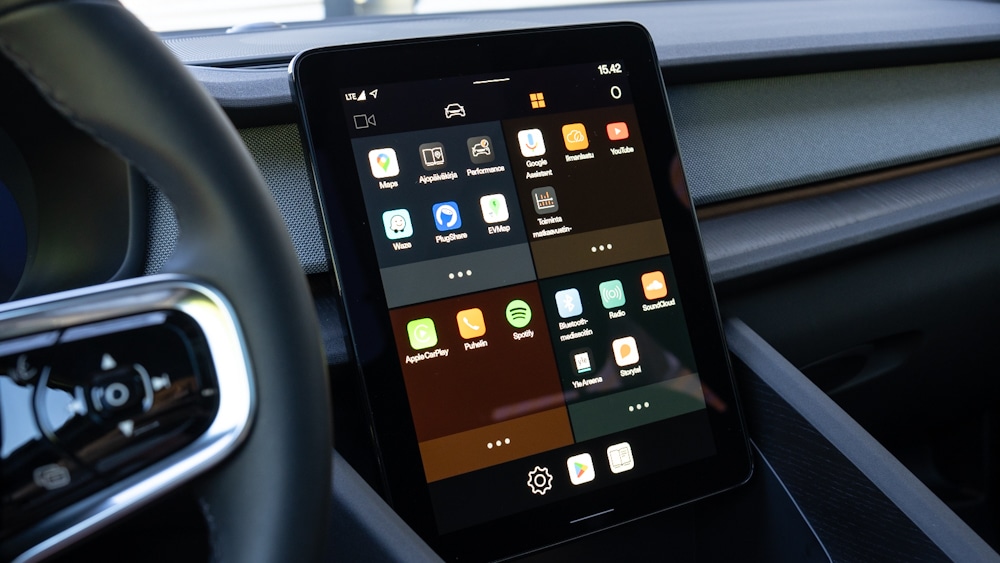
The first milestone on the road to carbon neutrality by 2040 is the Polestar 0 project, which aims to produce a climate-neutral car by 2030. According to the 2023 Sustainability Report, greenhouse gas emissions were reduced by 9% per car sold last year compared to 2022. Polestar 2 is 85% recyclable. In addition, most of the car’s components can be reused or remanufactured.
Currently, in addition to the Polestar 2, models 3 and 4 are available. By 2026, the Polestar range is expected to include five all-electric models. In addition to the SUV-style 3 and 4 models, the range will be completed by the GT-style Polestar 5 and the Polestar 6 roadster.
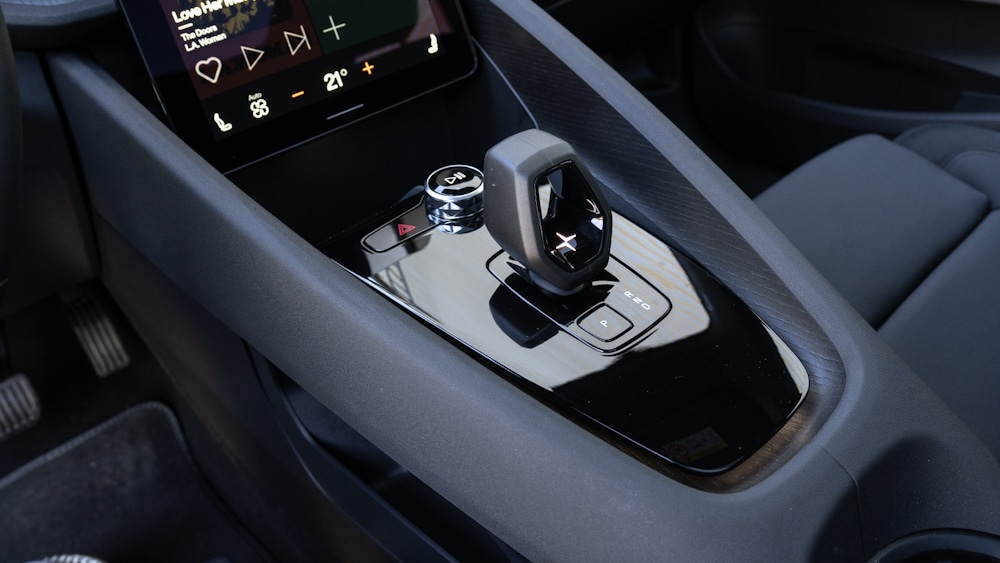
Hopefully, the other models will continue the upward trend of production as well as the Polestar 2. The Polestar 2 is by no means perfect, but in terms of drivability, quality and charging capabilities, it is a very good all-electric car in many respects. What’s more, the brand stands out for its stylish marketing.
Polestar 2 Long range Single motor
- Electric motor power: 220 kW (299 hp)
- Electric motor torque: 490 Nm.
- Acceleration: 6.2 seconds (0-100 km/h)
- Driving battery capacity (gross): 82 kWh.
- Driving battery capacity (net): 79 kWh.
- Manufacturer’s combined fuel consumption: 14.8-15.8 kWh/100km.
- Manufacturer’s declared range (combined): 659 km (WLTP)
- Electricity consumption during test drive: 15.5-19 kWh/100km (17-25 ⁰C)
- Test-driven range on a single charge: 510-415 km.
- Maximum charging power (DC): 205 kW.
- Maximum charging power (AC): 11 kW.
- Boot space: 407 l.
- Drive mode: rear-wheel drive
- Towing capacity : 1500 kg.
- Starting price: 51 900 euro
- Warranty: car 2 years ; battery 8 years / 160 000 km.
- Stainless steel warranty 12 years.
- CO2 emissions during the production phase: 22.4 tonnes of CO2
